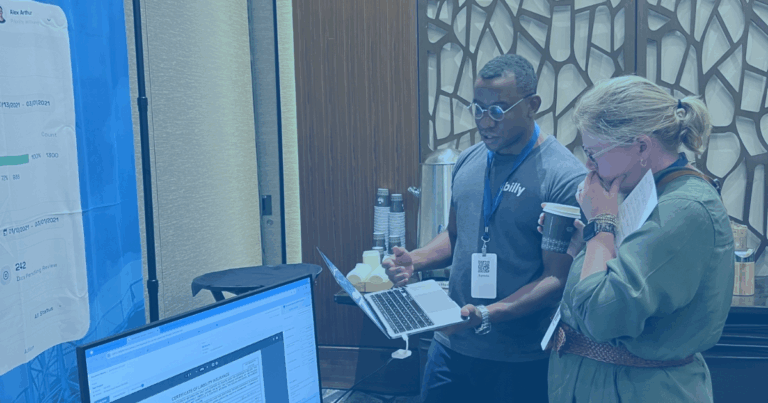Imagine this scenario: A construction company is building on a tight budget. To keep costs down and ensure the project stays on track, the team relies on manual methods, like tracking insurance in Excel. However, when a subcontractor’s insurance policy expires, it goes unnoticed by the project team, and they fail to request an updated certificate.
Unaware that the subcontractor no longer meets the insurance requirements, work continues as usual—until an accident occurs. A worker is injured on the job site and hires an attorney. Upon investigation, it’s revealed that the subcontractor’s insurance has lapsed, leaving the general contractor exposed. The general contractor’s higher insurance limits make them the primary target, resulting in a lawsuit for millions of dollars—far exceeding the value of the project.
Most professionals in the construction industry are at least somewhat aware of the risks associated with their work. They understand the critical importance of ensuring all parties are properly insured in case something goes wrong—because, sooner or later, something inevitably will.
The challenge, however, is that many individuals responsible for managing, tracking, and verifying insurance often lack the time, resources, or expertise to handle the complexities of construction risk management effectively. This gap in oversight increases the likelihood of costly mistakes that could have been avoided.
Understanding Subcontractor Insurance Requirements for Construction Risk Management
Unfortunately, simply having accurate and reliable insurance in place can’t protect general contractors from all aspects of construction risk. The people managing that insurance also need to understand what to look for when checking subcontractors’ insurance coverage. However, there are many nuances involved in this. A big part of those nuances is knowing the types of construction insurance required on projects.
Getting this wrong can not only be costly for your company, but also can lead to negative consequences related to issues with subcontractor performance, workmanship, quality, material failures, and worker health and safety.
When a general contractor signs a contract with an owner, the agreement will stipulate insurance requirements for the project. The general contractor will then require that all subcontractors involved with the project comply with those stipulations. In some cases, the general contractor might also require additional types of insurance coverage. For example, an owner might not require an umbrella policy, but the general contractor might decide they want that additional protection for the subcontractors they work with.
Although subcontractor insurance requirements typically vary from organization to organization, they often include the following types of construction insurance that you have to understand the nuances of when managing contracts:
- General liability
- Workers’ compensation
- Automobile coverage
- Umbrella or excess liability
Industry-standard certificates of insurance (COI) for subcontractors can give you a good idea of the types of insurance coverage your company’s partners have in place. But the only way to truly know the extent and nuance of that coverage — and protect your business from risk — is to review each subcontractor’s policy documents.
This can be a tedious and time-consuming process, which is why most companies simply trust the standard ACORD form, or the COI. So what is a COI exactly, and why do you need to know about it?
The Role of Certificates of Insurance in Construction
COI is the commonly used acronym for the standard ACORD 25 form, which was developed to establish a standard method that companies can use to track insurance policies.
Insurance policy documents might contain 100 pages or more (and sometimes many more), and a large portion of the language inside is universal in the industry. The COI saves time by extracting and presenting essential information in one document.
Here’s some of what is included in a COI:
- Policy name
- Policy number
- Active date and expiration date
- Name of the insured company
- Policy type (e.g. per project, claims made, occurrence-based, etc.)
- Policy specifics and dollar limits
- Insurance carrier and broker information
- Endorsements and waivers
It’s imperative that you have a system in place for reviewing, verifying, and tracking COIs. You should check that the COI includes all subcontractor policies and presents the correct maximum benefit dollar limit for each. You should also ensure that all policies are current (i.e., not expired) and “per project” rather than “claims made” policies. All “additionally insureds” for the project should be listed, and any related endorsements should be attached.
Unfortunately, COIs aren’t necessarily the source of truth we want them to be. They are often missing some important details. For example, a policy could contain an exclusion clause that denies coverage in cases where a company engages in any project that is categorized as “for-sale residential.” If you work for a general contractor that builds for-sale apartment buildings, you wouldn’t be aware of this just by reviewing the COI — which might cause you to unwittingly partner with a subcontractor that technically had zero coverage for that project. If something went wrong, the general contractor could be on the hook for a significant sum of money.
If reviewing COIs manually and tracking all these things sound complicated and labor-intensive, that’s because they are. Most reviewers simply compare the form against a template to quickly gauge its accuracy without considering the real significance of the document — and that can leave your general contractor vulnerable.
More Policies, More Problems
In most cases, general contractors have to track insurance for every subcontractor on every project to protect themselves from risk. And if one subcontractor is on multiple projects, that person has to provide a separate COI for each one. Consider an average construction company that makes $50 million a year, has 200 vendors, and works on 10 projects annually. It can be tracking as many as 4,000 insurance policies a year if only 50% of its vendors are working on their projects!
This example makes it easy to see how COI tracking can quickly become a complex task. But there are additional variables to consider, too. Insurance policies expire annually. Each of the 4,000 policies in the above example might have a different expiration date, and each one must be tracked and renewed before it expires — or a subcontractor can’t be permitted on-site and the project schedule could be negatively impacted.
All of this tracking typically takes place in an office, but subcontractors could be working on project sites that are nowhere close to the office. If a project manager in the field doesn’t receive timely information about a subcontractor’s insurance, they might unknowingly bring an uninsured subcontractor on site (again, putting the general contractor at risk).
To mitigate construction risk effectively you need a good COI management plan to organize and track your company’s subcontractors’ insurance. Unfortunately, few construction companies have such plans in place outside of Excel or a complex ERP.
The Current State of COI Tracking in Construction
Many construction companies still use Excel to track COIs — administrators and managers know Excel, and in some cases, that’s all they know. (I’ve been on a project site where managers even wrote letters in Excel.)
Microsoft’s spreadsheet software might have been the right tool for the job a decade ago, but it’s now becoming an obstacle. Excel does a good job of storing data, but nothing actionable happens in a spreadsheet. It’s simply a holding bin. Conditional formatting in Excel isn’t tracking; it’s just a way to make data colorful and alert people to changes — if they’re looking for those changes. Plus, using Excel for COI tracking puts the burden of accuracy on human employees and therefore exposes companies to the potential consequences of human error (which, as we all know, is almost inevitable).
Consider the case of insurance policy expiration, for example. It typically takes around 30 days to get a policy renewed. To ensure this happens on time every time, a contract administrator or project manager must scan the Excel spreadsheet each day and make a note of which policies are expiring. Then, they have to type up an email to each company with an expiring policy to request a renewal certificate and follow up on a daily or weekly basis until it’s received. This is also the same process if you are using project management software such as Procore.
Once the renewed COI arrives, it has to be verified as accurate, and the data it contains must be manually reentered into Excel or Procore. Remember the 4,000-policy situation in the example above? That’s a lot of data entry, which means plenty of opportunities for error.
Does this sound familiar? You’re looking at your subcontractors’ information in Excel and realize one subcontractor’s insurance coverage has expired, and your company is now technically noncompliant. Cue the panic and scrambling to get the insurance up to date. Here’s the bottom line: Excel is not a proactive solution for staying ahead of construction risk and maintaining compliance. It’s reactive, not proactive.
How COI-Tracking Software Empowers Construction Teams
As the project or compliance manager or contract administrator, you are responsible for every aspect of a project, including budgets, scheduling, contract agreements, and construction risk management. To save you time and headaches — and better protect your company from construction risk and the associated costs — you can rely on COI-tracking software like Billy.
With Billy, all COI information is stored in one place and is easily accessible via mobile phone, laptop, or any other device that accesses the internet. That means anyone on your team can quickly get a risk health check on projects no matter where you all are, and you can manage all certification-related activities — including communication with subcontractors — from a single point. Moreover, Billy eliminates the need for manual data entry (and the opportunities for error that go along with it) so you can spend more time on the important stuff: scheduling and budget.
Our app can help you track and manage insurance proactively, unlike Excel or Procore (however, we seamlessly connect to Procore for easy integration into your existing tech stack). But we’re more than an app — we’re a service. We do all the tracking and verifying, and you can sleep at night knowing that your company is protected by Billy and remains compliant.
As you consider whether Billy’s COI-tracking software or service is right for your company, ask yourself the following questions:
- Do I and the other team members responsible for verifying certificates understand all the important insurance language and terminology?
- Do we always receive renewal notifications at least 30 days prior to certificate expiration dates?
- How many subcontractors working on current projects have at least one expired policy?
- How often do we achieve 100% compliance on construction projects?
If you’re worried about the answers to these questions (or just don’t have those answers), Billy’s construction risk insurance specialists can help. Ditch the spreadsheets and experience the faster, easier, more secure way to track insurance during your construction projects. Request a customized demo today to learn more!
Frequently Asked Questions
What are the 5 principles of risk management in construction?
The five principles of risk management in construction are identifying risks, assessing their potential impact, developing strategies to mitigate them, implementing those strategies, and continuously monitoring and adjusting as needed. With Billy, you can streamline the process by automating insurance tracking and ensuring real-time visibility into compliance, reducing the likelihood of missed risks.
What are the 4 types of construction risk?
The four types of construction risk include financial risks, project risks (delays, design flaws, or scope changes), legal risks (contract disputes or regulatory non-compliance), and environmental risks (weather, site conditions, or natural disasters). Billy helps mitigate legal and financial risks by simplifying the tracking and verification of Certificates of Insurance, ensuring compliance with insurance requirements across all projects.
What is a CRIS certification?
A CRIS (Construction Risk and Insurance Specialist) certification is a professional designation that demonstrates expertise in construction risk management and insurance. It signifies advanced knowledge of the unique risks and insurance requirements in the construction industry. Billy offers plans including access to this expertise to automate COI management, reducing administrative burden, and ensuring compliance across your projects.






